In the not-so-distant past, companies practicing sustainable manufacturing methods were considered outliers—those willing to trade a bit of margin for environmental responsibility and some good PR. Back then, sustainable machining often meant little more than recycling metal scraps. Everything else was business as usual.
Fast forward to 2025, and sustainable manufacturing isn’t merely nice-to-have; it’s a business necessity. Customers and regulators expect it, and companies that fall behind risk more than just bad optics. At Ben Machine, we’ve taken a long-term approach to building sustainability into our operations. It’s not just something we talk about—it’s built into how we operate every day.
Sustainable manufacturing refers to the use of economically sound processes that minimize negative environmental impacts while conserving energy and natural resources. It’s about more innovative resource use, better technology, and a clear commitment to doing things right, for the environment and long-term business success.
The Case for CNC Machining in a Sustainable Future
Most people are familiar with the standard benefits of CNC machining: repeatability, precision, and reduced labour requirements. What gets less attention (but is just as important) is how CNC machines can support sustainability goals.
Here are three ways CNC machining plays a role in sustainable manufacturing:
1. CNC machining produces minimal waste
CNC software utilizes simulations and optimized toolpaths to reduce waste during prototyping and production. With precise CAD-CAM models, our processes are accurate from the first cycle, eliminating the need for wasteful trial and error. Repeatability across runs means we use only the material we need, especially important in a high-mix, low-volume environment like ours.
2. CNCs reduce energy consumption
Modern CNC machines are increasingly designed with energy efficiency in mind. Features like idle-time shutoffs, high-efficiency motors, and adaptive feed rates mean machines consume less energy per part. That makes a real difference when running production for aerospace, defence, or medical components—industries where precision is critical, but energy use can be intensive.
3. Automation reduces defects and rework
Fewer errors mean fewer wasted parts and less time spent correcting mistakes. CNC automation limits human error and produces consistent results, helping us avoid costly re-runs that drain resources and add to our environmental impact.
These foundational advantages make CNC a natural fit for companies looking to meet sustainability targets without compromising performance.
But how does Ben Machine take these benefits even further?
Let’s examine the strategies we employ to minimize environmental impact across our facility.
How Ben Machine Minimizes Environmental Impact
Putting sustainability at the centre of our manufacturing strategy adds value across the board. Some of our changes are straightforward, while others involve long-term planning and investment. Either way, the goal is the same: improve performance while reducing environmental impact.
1. Assessing Facility Operations
We regularly assess our facility to identify opportunities for reducing energy use, emissions, and heat load. These assessments include:
- Conducting internal energy audits to track power consumption across systems.
- Monitoring emissions to air and water.
- Using reflective window film to reduce solar heat gain and cut down on cooling loads during summer months.
- Upgrading lighting systems to energy-efficient LED technology, which not only cuts power usage but also reduces internal heat output.
We’re also exploring additional tools, such as air quality sensors and greenhouse gas tracking software, to enhance our monitoring capabilities. Nothing gets overlooked when it comes to sustainable manufacturing.
2. Reducing, Reusing, and Recycling
The classic three Rs—reduce, reuse, recycle—are more than a slogan. We’ve integrated them into our everyday operations:
- Reusable Packaging: We’ve implemented a returnable packaging loop with one of our major customers. Shipping containers are returned via shared couriers, reducing the use of single-use cardboard and lowering transport emissions.
- Smarter Inventory Management: Before placing orders, we review our existing inventory to avoid overstocking and minimize material waste.
- Material Recycling: All scrap metal is sorted and sent for recycling. We track collection levels and work with specialized recyclers to ensure responsible handling.
These actions help us cut down on material costs, reduce waste, and support a cleaner supply chain. We also encourage our partners and customers to consider recycling programs that align with ours.
3. Choosing Sustainable Suppliers
Our commitment to sustainability extends into our supply chain. We vet our suppliers carefully, prioritizing those that demonstrate real sustainability initiatives, such as:
- ISO 14001 certification for environmental management
- Closed-loop manufacturing capabilities
- Use of energy-efficient transportation methods
By partnering with responsible suppliers, we help lower the environmental impact of every part we produce, starting from the source. This approach ensures our customers benefit from cleaner, more responsible parts from start to finish.
4. Improving Energy Efficiency
Keeping equipment up to date plays a significant role in our strategies for sustainable manufacturing.
- We’ve invested in newer CNC machines that offer energy savings through better insulation, high-efficiency motors, and optimized machining paths.
- Machines are maintained regularly to ensure they continue running at peak efficiency.
- Our facility recently underwent a complete LED lighting upgrade. These newer generation LEDs have dramatically reduced our energy consumption while providing brighter, more consistent visibility on the shop floor.
Upgrades like these add up over time, delivering measurable gains in terms of performance and sustainability.
5. Managing Air Quality for Environmental and Employee Health
Clean air isn’t just good for the environment—it’s also beneficial for people. At Ben Machine, we take air quality seriously.
- Every CNC machine is fitted with a mist collector that captures coolant vapours before operators open the enclosure. This feature keeps the immediate workspace safe.
- Additionally, we operate 16–20 large-scale air purifiers throughout the facility, with each unit performing 7–10 full air changes per hour.
- This layered system—individual machine mist collection plus centralized air purification—offers a level of air quality rarely seen in typical machine shops.
The result is a cleaner, safer workspace for our team and a facility that meets or exceeds occupational air quality standards.
6. Coolant and Resource Management
Coolant systems often go unnoticed, but they’re a key part of our sustainability efforts:
- We use coolant types that are less hazardous and more environmentally friendly.
- Systems are monitored with regular maintenance schedules to maximize coolant life and reduce usage.
- When coolants reach the end of their cycle, we recycle or recondition them to avoid unnecessary waste.
These small-scale changes play a big role in reducing our environmental footprint.
Key Metrics for Sustainable Manufacturing
You can’t improve what you don’t measure. At Ben Machine, we use key metrics to monitor and guide our sustainability progress:
- kWh per part produced: A measure of energy efficiency in real terms.
- Scrap recovery percentage: Tracks the amount of material we reclaim and recycle.
- Air change rates: Help us ensure clean, breathable air throughout the shop floor.
- VOC emissions: Measures the level of volatile organic compounds in the air from processes and materials.
By keeping close tabs on these metrics, we stay focused on continuous improvement—not just targets on paper.
Conclusion
Sustainable manufacturing isn’t just about compliance or checking boxes; it’s about creating a lasting impact. It’s about making smart decisions that protect the environment while driving better business performance.
At Ben Machine, we’ve built sustainability into everything we do, from the way we power our plant to how we select our partners and manage waste. These strategies for sustainable manufacturing help us reduce environmental impact while increasing value for our clients.
To learn more about how we bring sustainability into every part we machine, contact us today.







